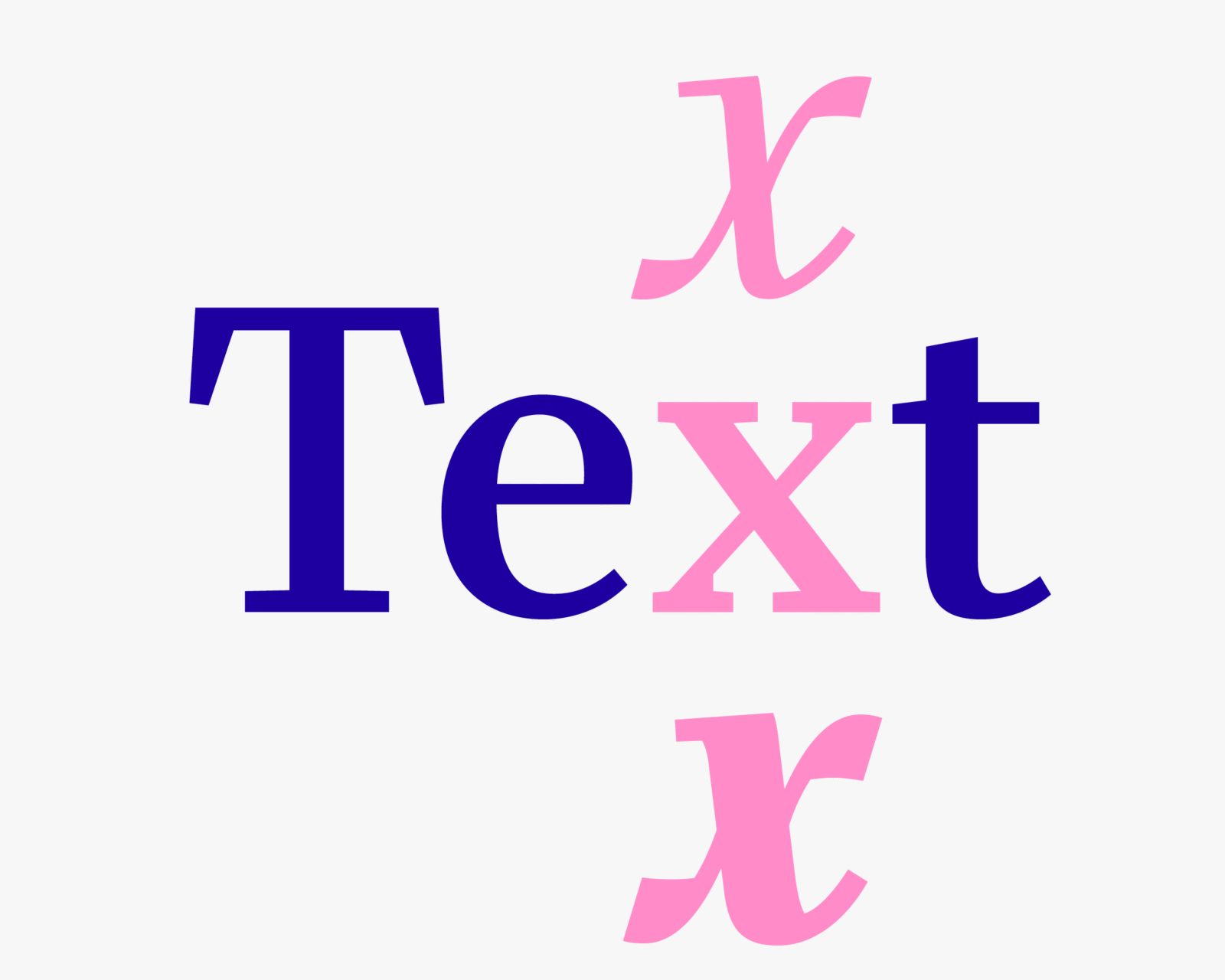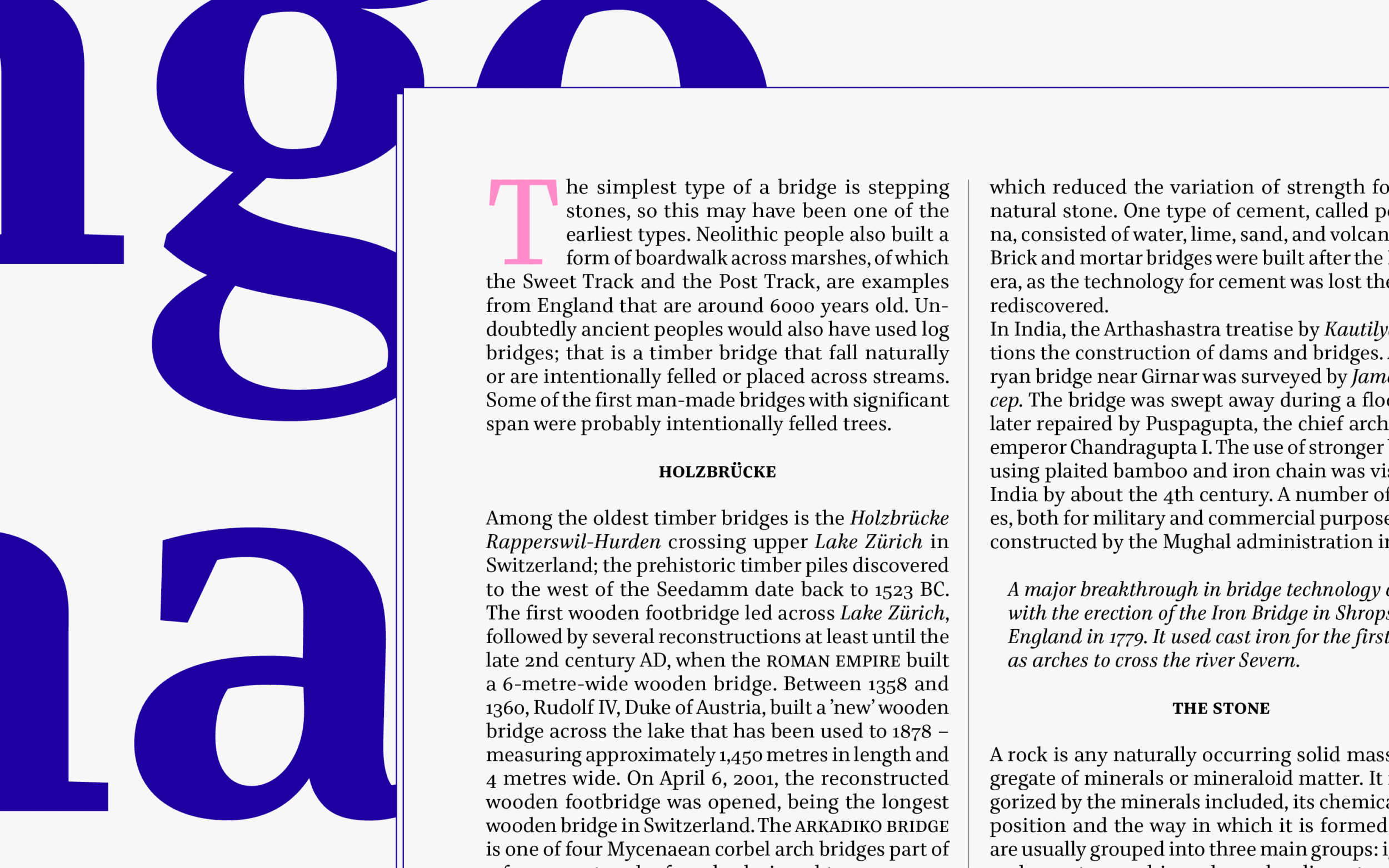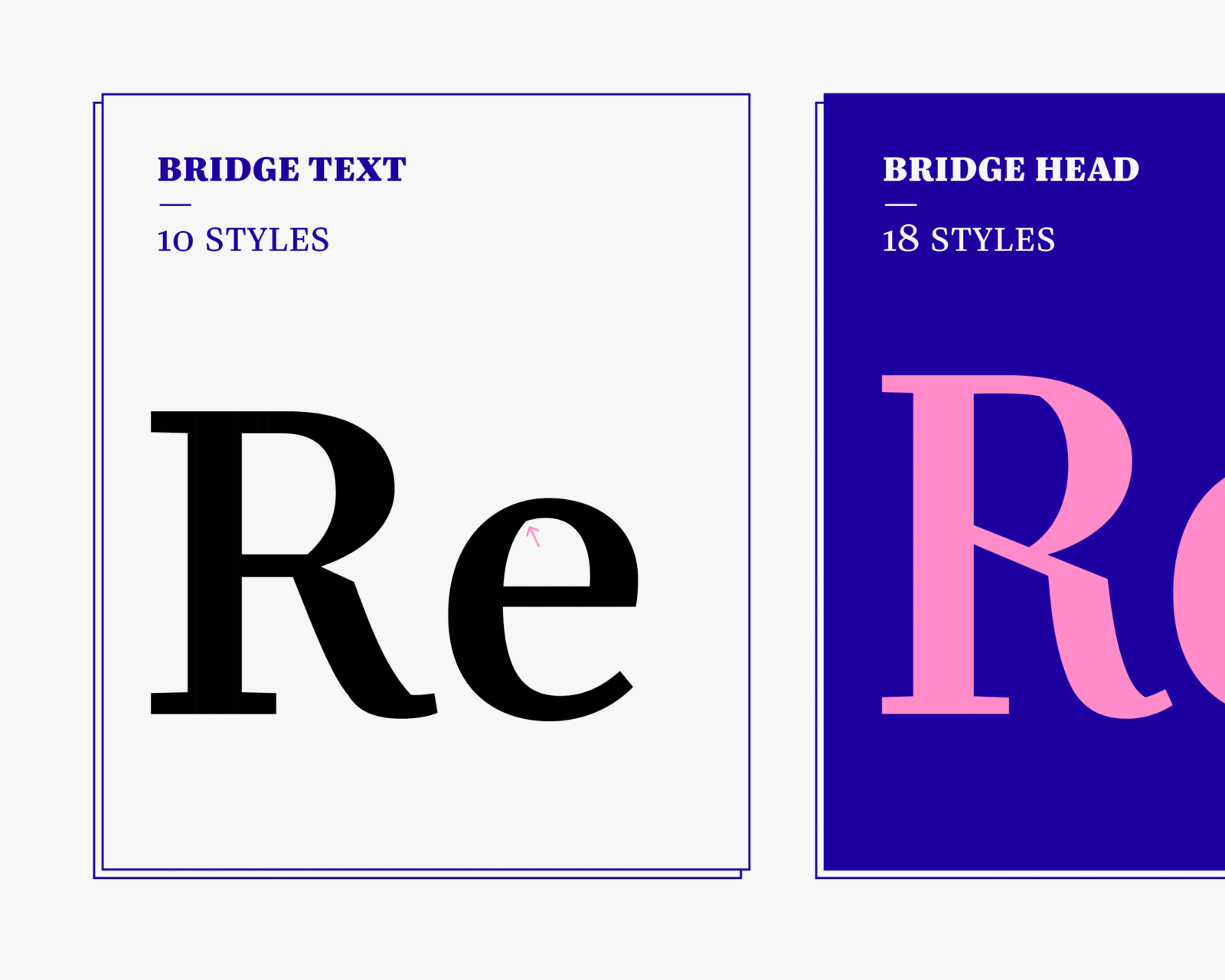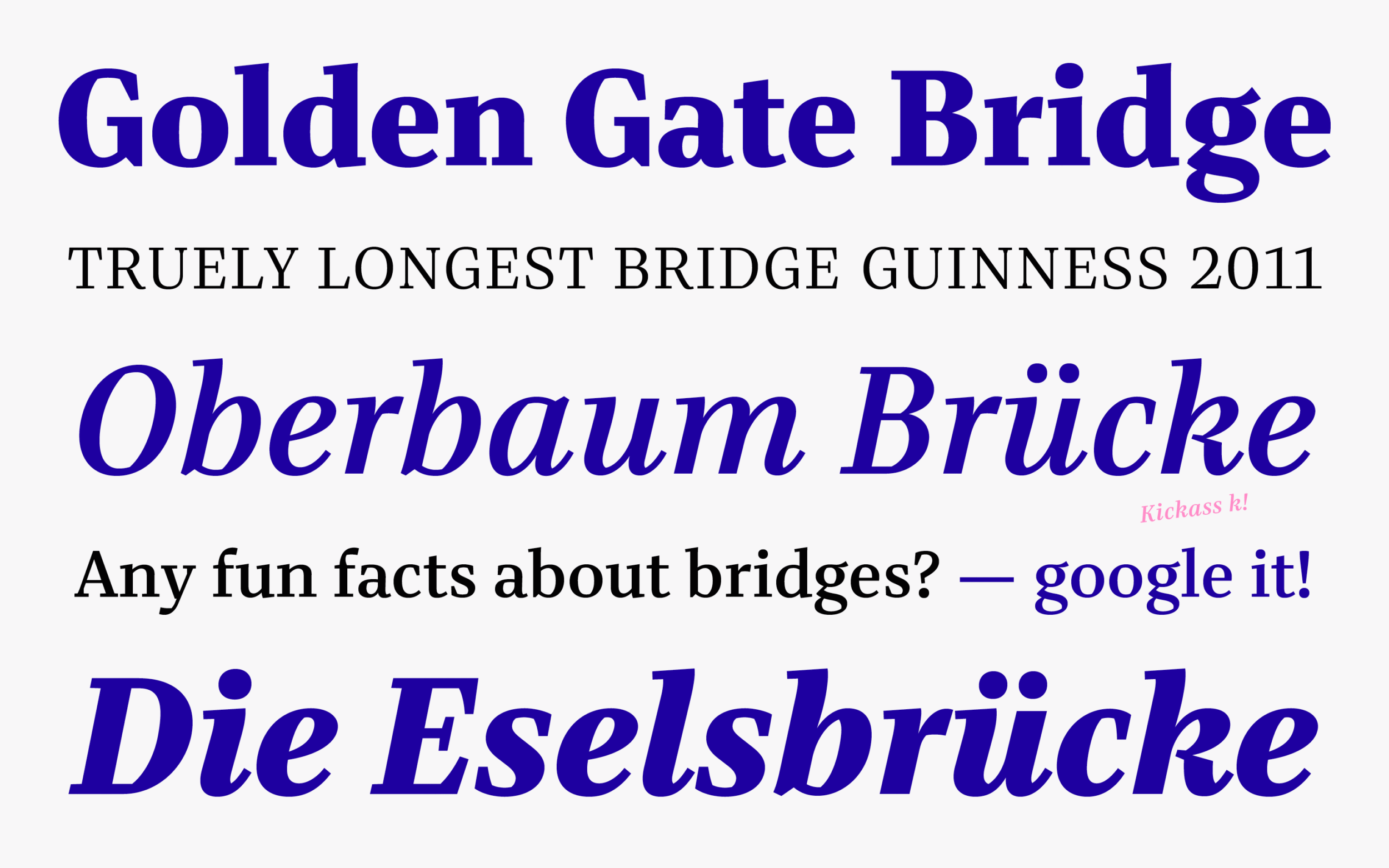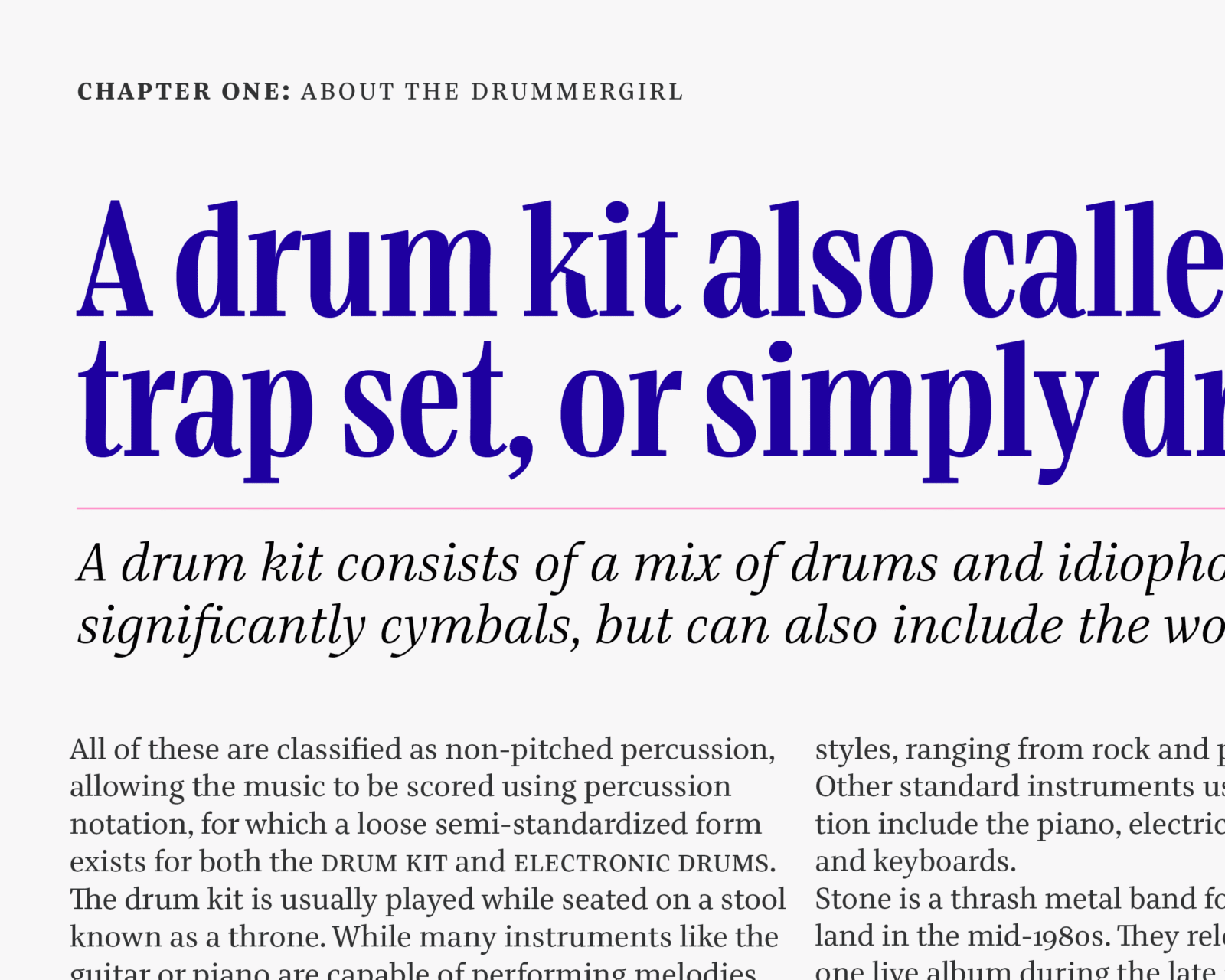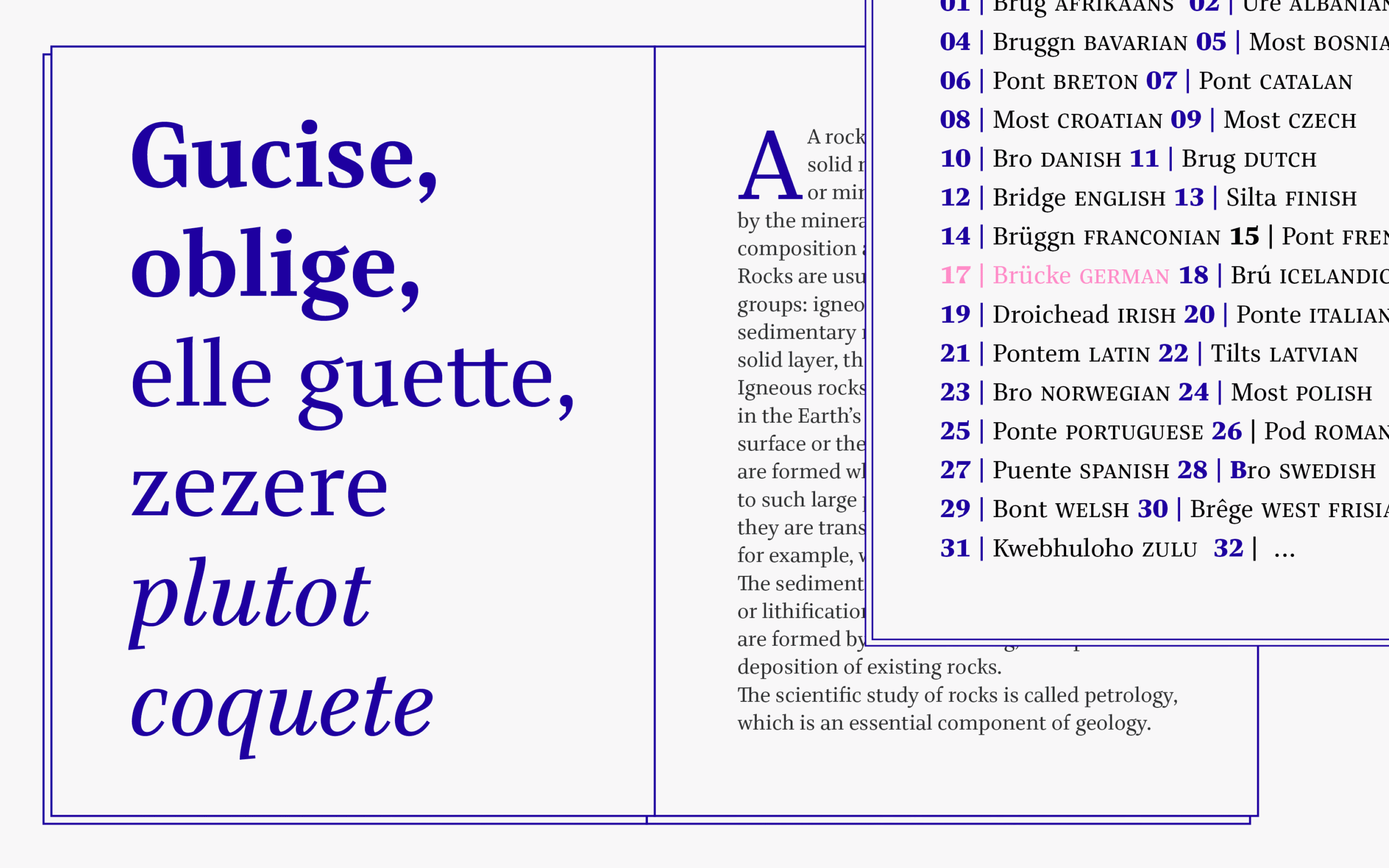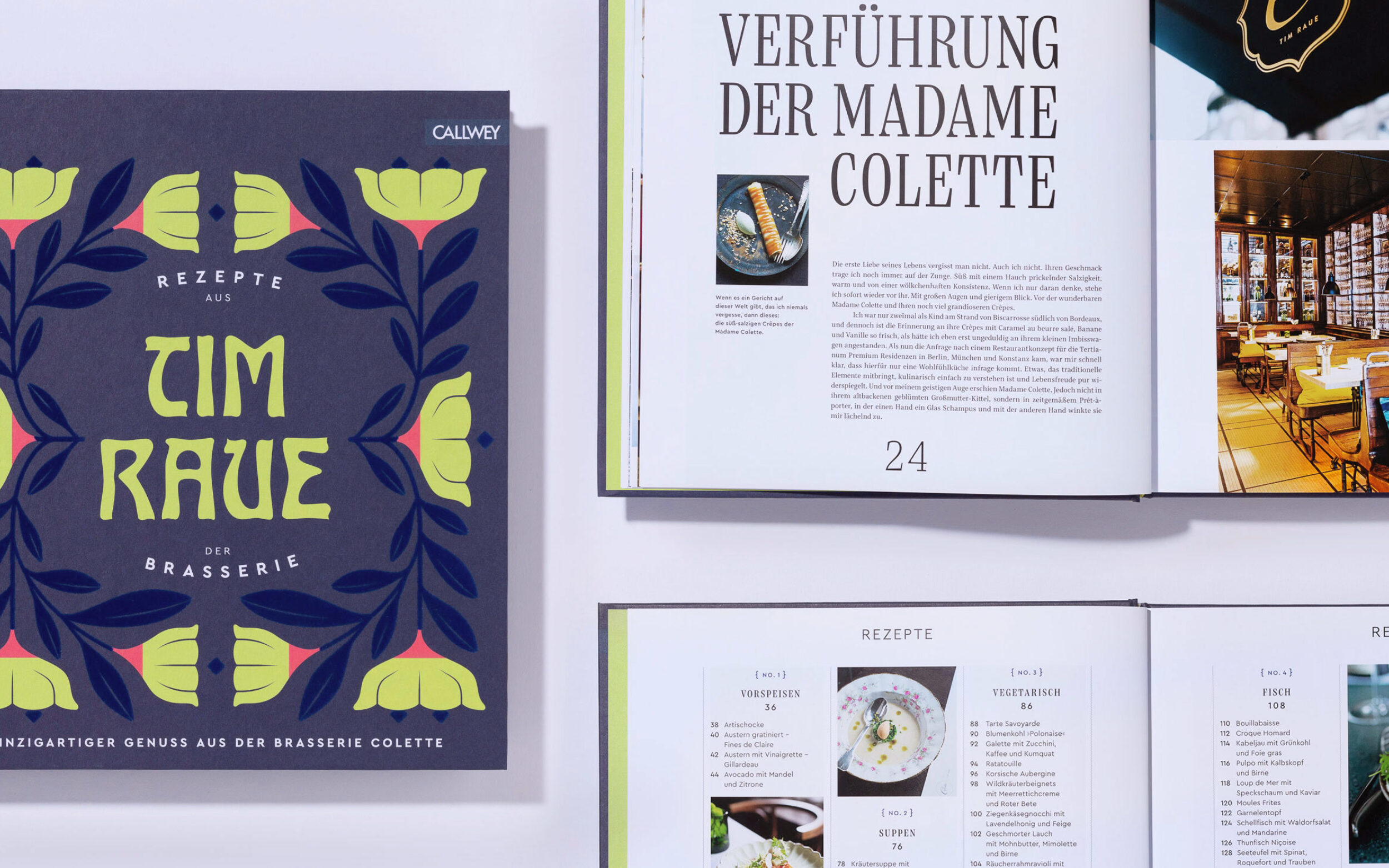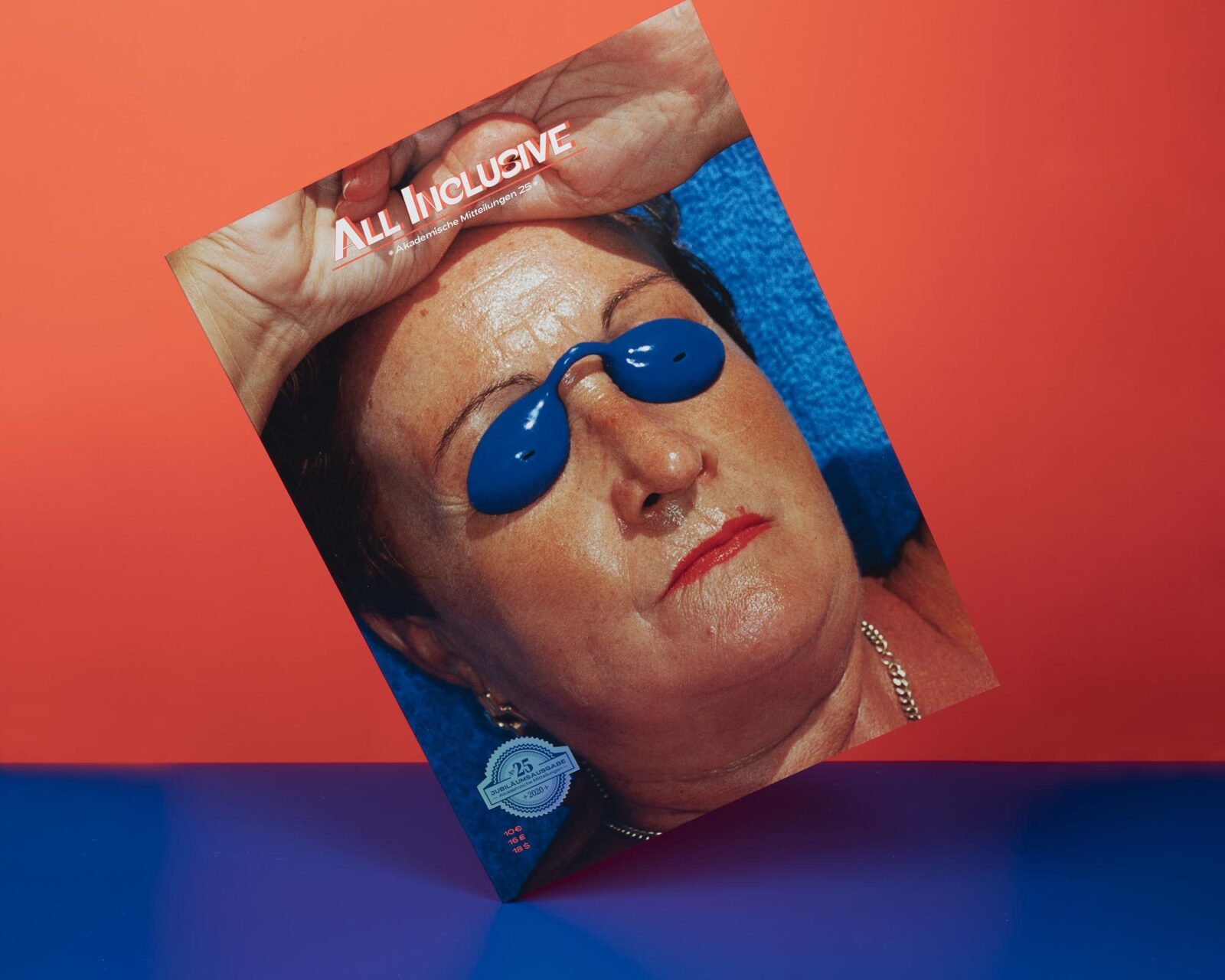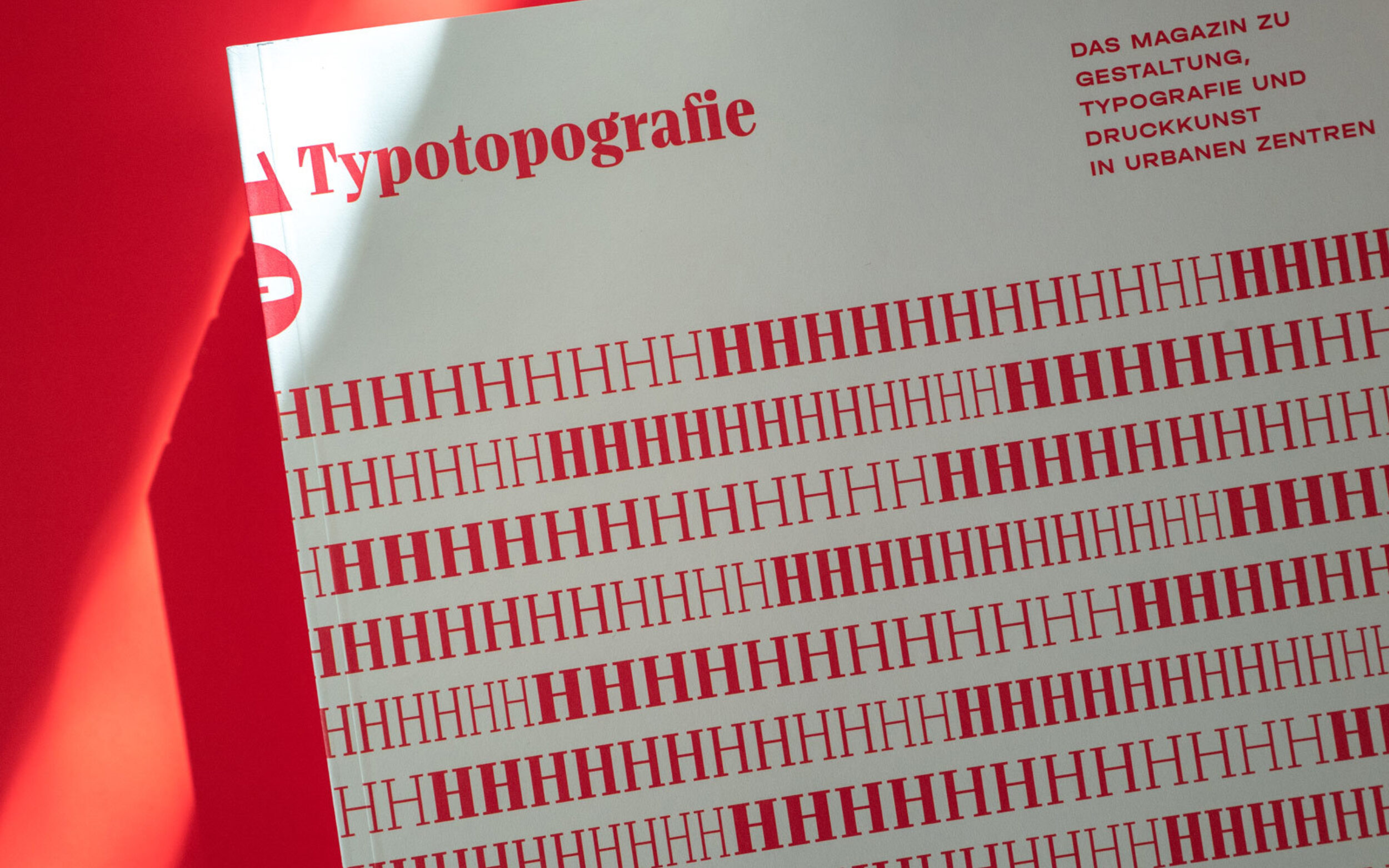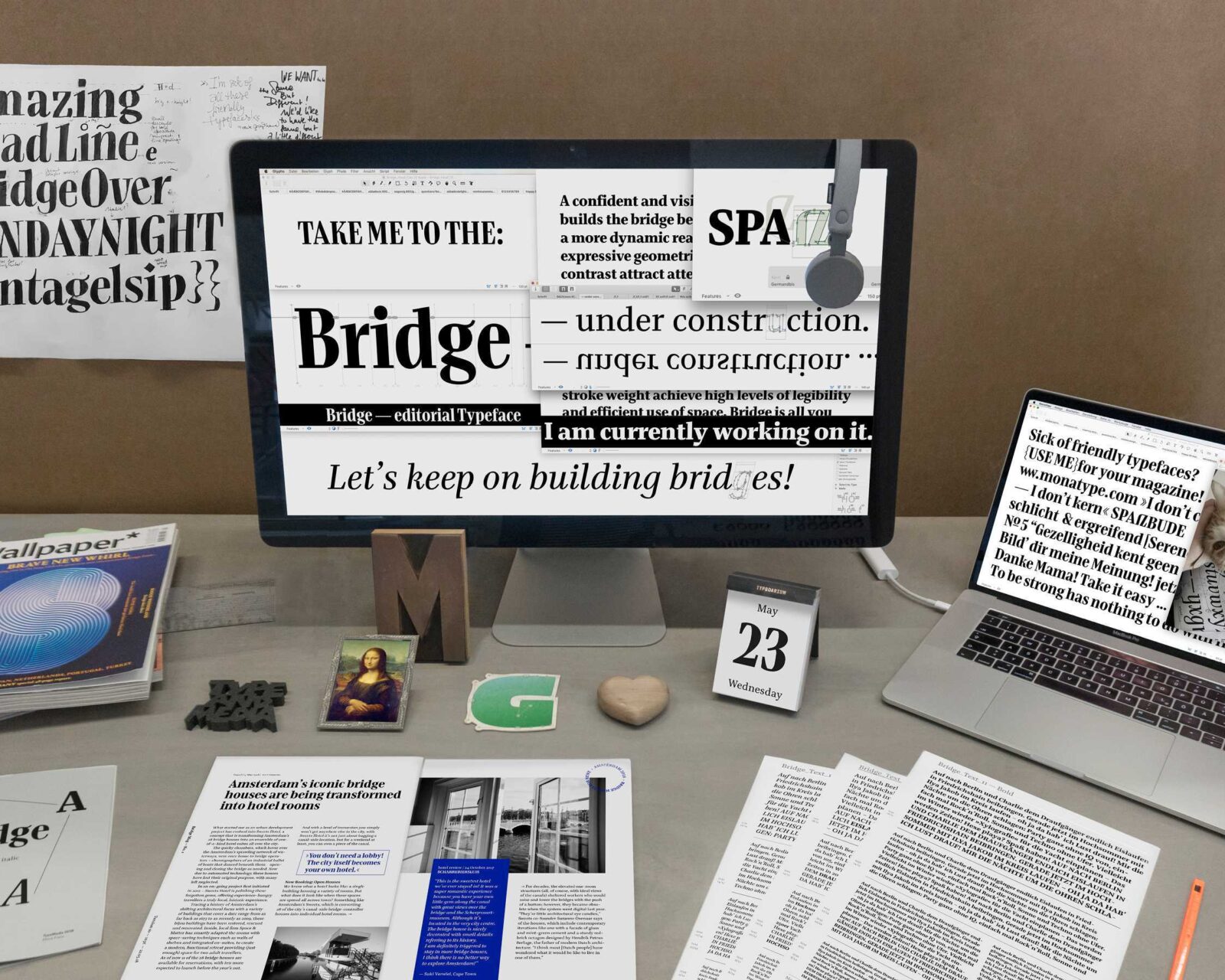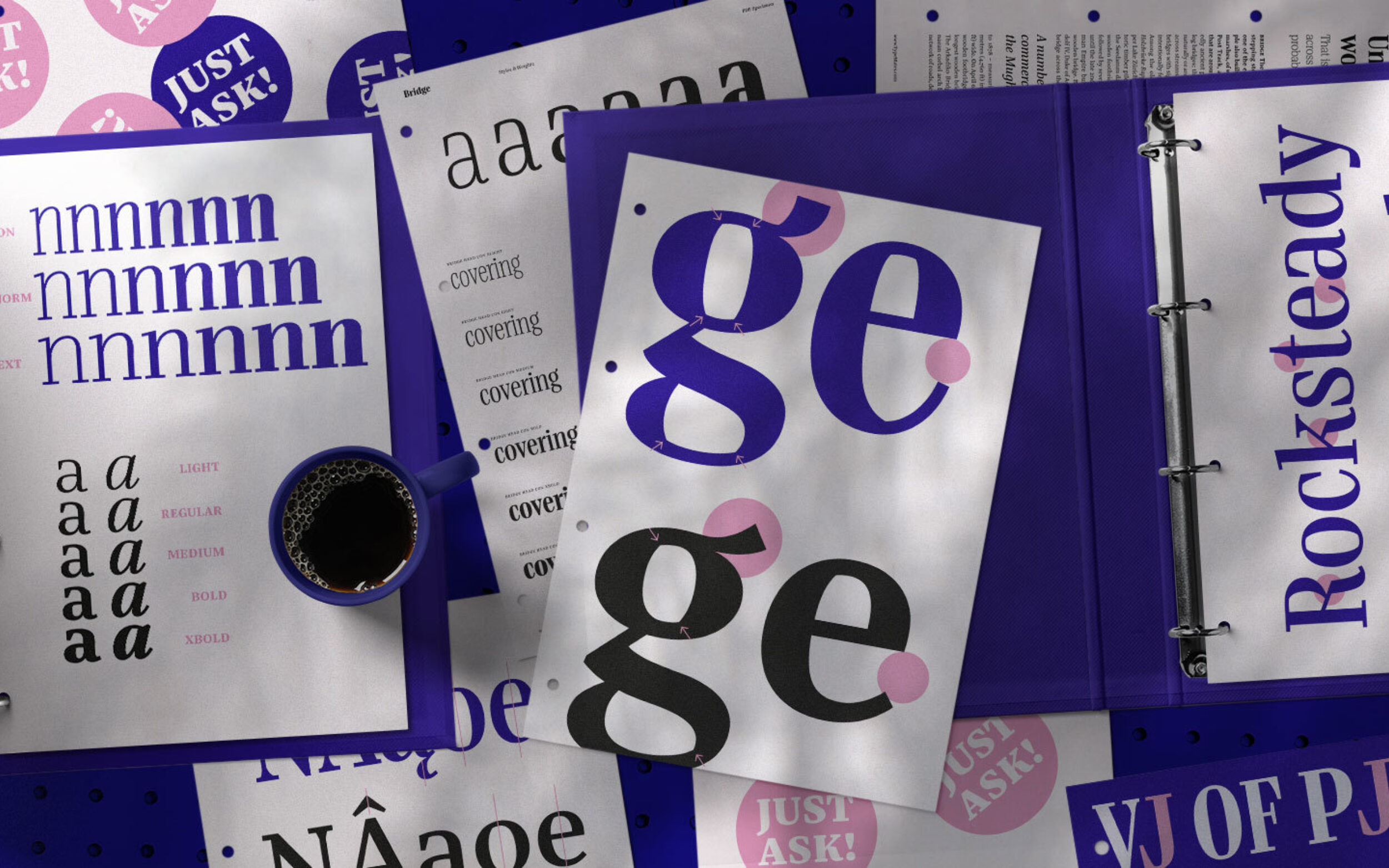Starting
€ 50.00
Single style from
€ 50.00
Complete family from € 280.00
Try
Buy
Complete family from € 280.00
Bridge Text Variable
Bridge Text
Bridge Text
The crisp character gives long reads a comfortable, sparkling texture
Bridge Text
Timber Covered bridges were built in the late 1700s to the late 1800s, reminiscent of earlier designs in Germany and Switzerland. In later years, some were partly made of stone or metal but the trusses were usually still made of wood; in the US, there were three styles of trusses, the Queen Post, the Burr Arch and the Town Lattice. Hundreds of these structures still stand in North America. They were brought to the attention of the general public in the 1990s by the novel, movie, and play The Bridges of Madison County.
Bridge Text
Rhythm and Clarity
